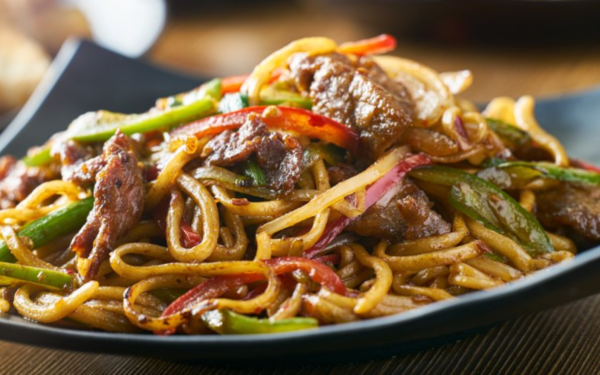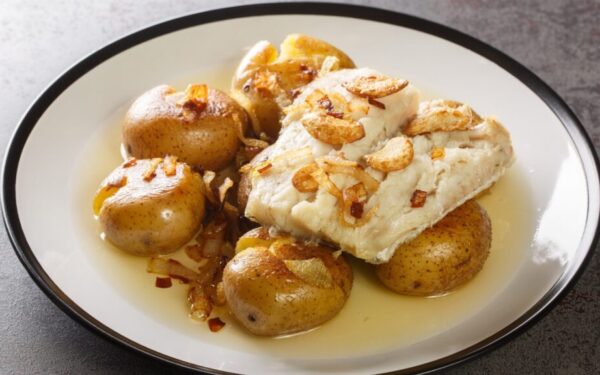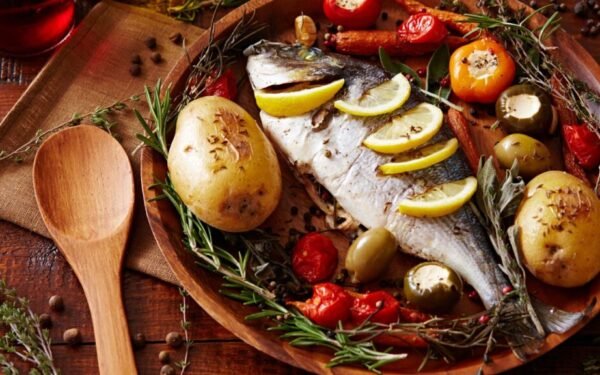Expand Your Culinary Horizons: Traditional Brazilian Recipes

Overview
Introduction to Brazilian cuisine
Brazilian cuisine is a vibrant and diverse culinary tradition that reflects the country’s rich cultural heritage. With influences from indigenous, African, Portuguese, and other European cuisines, Brazilian food offers a unique and flavorful experience. From the iconic feijoada, a hearty black bean stew with pork, to the delicious coxinha, a savory deep-fried dough filled with shredded chicken, there is something for everyone to enjoy. The use of fresh ingredients, bold spices, and tropical fruits also adds a refreshing twist to many Brazilian dishes. Whether you’re a meat lover or a vegetarian, Brazilian cuisine has a wide range of options that will satisfy your taste buds and expand your culinary horizons.
Influence of indigenous, African, and European cultures
Brazilian cuisine is a reflection of the diverse cultural influences that have shaped the country’s history. The indigenous, African, and European cultures have all contributed to the rich and unique flavors found in traditional Brazilian recipes. Indigenous ingredients such as cassava, corn, and tropical fruits are commonly used in dishes like tapioca and acarajé. African influences can be seen in dishes like feijoada, a hearty black bean stew with pork, and moqueca, a flavorful fish stew cooked with coconut milk. European influences are evident in the use of ingredients like wheat, dairy products, and wine in dishes like pão de queijo, a cheese bread, and brigadeiro, a popular chocolate truffle. The fusion of these diverse culinary traditions has created a vibrant and delicious food culture in Brazil that is worth exploring.
Popular ingredients and cooking techniques
Brazilian cuisine is known for its diverse range of ingredients and cooking techniques. Some of the popular ingredients used in traditional Brazilian recipes include cassava, black beans, rice, and various types of meat such as beef, pork, and chicken. These ingredients are often combined with aromatic herbs and spices like garlic, onion, and cumin to create flavorful dishes. Cooking techniques in Brazilian cuisine vary from grilling and roasting to stewing and frying. Each technique adds a unique taste and texture to the dishes, making Brazilian cuisine a delight for food enthusiasts looking to expand their culinary horizons.
Feijoada: Brazil’s National Dish
History and significance of feijoada
Feijoada is a traditional Brazilian dish that has a rich history and significant cultural importance. It is often considered the national dish of Brazil and is enjoyed by people of all backgrounds. The origins of feijoada can be traced back to the time of slavery in Brazil, when African slaves would use leftover scraps of meat to create a hearty and flavorful stew. Over time, feijoada became a symbol of resilience and creativity, as it showcased the ability to transform humble ingredients into a delicious and satisfying meal. Today, feijoada is not only a beloved culinary tradition but also a way to celebrate Brazilian culture and bring people together through food.
Ingredients and preparation
In this section, we will explore the ingredients and preparation methods used in traditional Brazilian recipes. Brazilian cuisine is known for its diverse flavors and unique combinations of ingredients. From the tropical fruits of the Amazon rainforest to the rich meats of the Southern region, Brazilian dishes showcase the country’s cultural and geographical diversity. The traditional recipes often feature ingredients such as cassava, black beans, coconut milk, and palm oil, which are used to create dishes like feijoada, acarajé, and brigadeiro. The preparation methods vary depending on the dish, with some recipes requiring slow cooking or marinating to enhance the flavors. Whether you are a seasoned chef or a beginner in the kitchen, exploring traditional Brazilian recipes will surely expand your culinary horizons and introduce you to a whole new world of flavors and techniques.
Serving and accompaniments
When it comes to serving traditional Brazilian recipes, there are a few key accompaniments that can enhance the flavors and complete the dining experience. One popular accompaniment is farofa, a toasted cassava flour mixture that adds a crunchy texture to dishes like feijoada, a black bean stew. Another common accompaniment is pão de queijo, a cheesy bread roll that is a staple in Brazilian cuisine. It is often served alongside meals or enjoyed as a snack. Additionally, Brazilian rice and beans, known as arroz e feijão, are a classic combination that can be served as a side dish or as a main course. These accompaniments not only complement the flavors of traditional Brazilian dishes but also add a touch of authenticity to any meal.
Pão de Queijo: Cheesy Brazilian Delight
Origin and cultural importance of pão de queijo
Pão de queijo, a traditional Brazilian cheese bread, has a rich origin and holds significant cultural importance in Brazil. This delicious treat originated in the state of Minas Gerais, known for its dairy production. The recipe for pão de queijo dates back to the 18th century and was created by African slaves who worked on the farms. Over time, pão de queijo became a staple in Brazilian cuisine and is now enjoyed by people of all ages and backgrounds. Its unique combination of tapioca flour, cheese, and eggs gives it a chewy texture and a savory taste that is hard to resist. Today, pão de queijo is not only a popular snack but also a symbol of Brazilian culinary heritage and a must-try for anyone looking to experience the diverse flavors of Brazil.
Traditional recipe and variations
Traditional Brazilian cuisine is rich and diverse, offering a wide array of flavors and ingredients. One of the highlights of this culinary tradition is the traditional recipes and their variations. These recipes have been passed down through generations, preserving the authentic flavors and techniques of Brazilian cooking. From feijoada, a hearty black bean stew with pork, to acarajé, a deep-fried ball of black-eyed pea dough filled with shrimp and spices, there is something for everyone to enjoy. Each region of Brazil has its own unique twist on these traditional dishes, adding local ingredients and flavors to create a truly unique culinary experience. Whether you are a fan of spicy and bold flavors or prefer milder and more delicate tastes, traditional Brazilian recipes are sure to satisfy your taste buds and expand your culinary horizons.
Best ways to enjoy pão de queijo
Pão de queijo, also known as Brazilian cheese bread, is a popular and delicious treat enjoyed by many. There are several ways to enjoy this traditional Brazilian dish. One of the best ways is to have it freshly baked, straight from the oven. The warm and cheesy bread is incredibly satisfying and pairs well with a cup of coffee or tea. Another way to enjoy pão de queijo is to have it as a snack or appetizer. Its bite-sized shape makes it perfect for sharing with friends and family. Lastly, pão de queijo can also be enjoyed as a side dish with a main meal. Its cheesy and chewy texture complements a variety of dishes, adding a unique and flavorful touch to any plate. Whether you’re enjoying it as a breakfast treat, a snack, or a side dish, pão de queijo is sure to delight your taste buds and expand your culinary horizons.
Moqueca: A Taste of the Brazilian Coast
Introduction to moqueca
Moqueca is a traditional Brazilian dish that originated in the coastal regions of the country. It is a flavorful and aromatic fish stew that showcases the rich culinary heritage of Brazil. The dish is typically made with fresh fish, tomatoes, onions, garlic, and a variety of spices such as paprika, cumin, and coriander. The ingredients are cooked together in a clay pot, allowing the flavors to meld and create a delicious and hearty meal. Moqueca is often served with white rice and farofa, a toasted cassava flour mixture, which adds a crunchy texture to the dish. Whether you’re a seafood lover or simply looking to explore new flavors, moqueca is a must-try dish that will transport you to the vibrant and diverse culinary world of Brazil.
Regional variations and ingredients
Brazil is a country known for its rich and diverse culinary traditions, and regional variations play a significant role in shaping the flavors and ingredients used in traditional Brazilian recipes. From the northern region, where dishes are influenced by the flavors of the Amazon rainforest, to the southern region, known for its hearty and meat-centric cuisine, each area of Brazil offers its own unique twist on classic dishes. Ingredients such as cassava, coconut milk, palm oil, and various types of seafood are commonly used in coastal regions, while the use of beans, rice, and beef is prevalent in the interior regions. Exploring the regional variations and ingredients of Brazilian cuisine is a fascinating way to delve deeper into the country’s vibrant food culture and expand your culinary horizons.
Step-by-step preparation guide
In this step-by-step preparation guide, we will walk you through the process of creating traditional Brazilian recipes that will expand your culinary horizons. Whether you are a seasoned chef or a beginner in the kitchen, these recipes are designed to be easy to follow and will introduce you to the vibrant flavors and unique ingredients of Brazilian cuisine. Get ready to embark on a culinary journey filled with delicious dishes and new culinary techniques. Let’s get started!
Brigadeiro: Brazil’s Sweet Sensation
History and cultural significance of brigadeiro
Brigadeiro is a traditional Brazilian sweet that holds a special place in the hearts of the locals. This delectable treat has a rich history and cultural significance in Brazil. It was created in the 1940s and is named after Brigadeiro Eduardo Gomes, a prominent figure in Brazilian history. Originally made with condensed milk, cocoa powder, butter, and chocolate sprinkles, brigadeiro has evolved over the years with various flavors and toppings. It is often enjoyed at birthday parties, celebrations, and as a beloved childhood treat. The popularity of brigadeiro has spread beyond Brazil, with people around the world embracing this delightful confectionary. Whether you’re indulging in the classic version or exploring the countless variations, brigadeiro is sure to satisfy your sweet tooth and introduce you to the vibrant flavors of Brazil.
Classic brigadeiro recipe
The classic brigadeiro recipe is a beloved Brazilian treat that is often enjoyed during celebrations and special occasions. Made with just a few simple ingredients, including sweetened condensed milk, cocoa powder, butter, and chocolate sprinkles, brigadeiros have a rich and fudgy texture that is sure to satisfy any sweet tooth. These bite-sized delights are traditionally rolled into small balls and coated in chocolate sprinkles, giving them their signature look. Whether enjoyed as a snack or served as a dessert, the classic brigadeiro recipe is a must-try for anyone looking to explore the delicious world of Brazilian cuisine.
Creative variations and serving suggestions
When it comes to traditional Brazilian recipes, there is always room for creativity. From adding unique ingredients to experimenting with different cooking techniques, the possibilities are endless. For example, you can put a modern twist on the classic feijoada by using smoked bacon instead of traditional pork cuts. Or, you can serve the popular brigadeiro as a topping for ice cream or as a filling for cupcakes. The key is to let your imagination run wild and explore new flavors and presentations. Whether you are hosting a dinner party or simply looking to impress your family with a delicious meal, these creative variations and serving suggestions will surely elevate your culinary experience.
Acarajé: The Iconic Street Food
Origins and cultural importance of acarajé
Acarajé is a traditional Brazilian dish that originated in the state of Bahia. It holds great cultural importance in the region and is considered a symbol of Afro-Brazilian heritage. The dish is made from black-eyed pea dough, which is deep-fried and stuffed with a flavorful mixture of shrimp, onions, tomatoes, and spices. Acarajé is often sold by street vendors in Bahia, where it is enjoyed as a popular street food. Its origins can be traced back to the West African country of Nigeria, where a similar dish called akara is commonly prepared. Acarajé has become an integral part of Bahian cuisine and is loved by locals and tourists alike for its unique flavors and cultural significance.
Traditional recipe and fillings
Brazilian cuisine is known for its rich and diverse flavors, and traditional recipes play a significant role in showcasing the country’s culinary heritage. When it comes to traditional Brazilian recipes and fillings, there is a wide range of options to explore. From the iconic feijoada, a hearty black bean stew with various cuts of pork, to the savory coxinha, a deep-fried dough filled with shredded chicken, these recipes are a true delight for food enthusiasts. Other popular traditional fillings include carne seca, a type of dried beef, and queijo coalho, a firm cheese often grilled to perfection. Whether you’re a fan of meat, seafood, or vegetarian options, traditional Brazilian recipes and fillings offer something for everyone to enjoy and expand their culinary horizons.
Where to find the best acarajé in Brazil
Acarajé is a traditional Brazilian street food that originated in the state of Bahia. It is a deep-fried ball made from black-eyed peas and filled with various ingredients such as shrimp, vatapá (a spicy paste made from bread, shrimp, coconut milk, and peanuts), and caruru (a sauce made from okra, onion, and shrimp). While you can find acarajé throughout Brazil, the best place to experience this delicious dish is in Bahia. The state is known for its vibrant street food scene, and the streets of Salvador, the capital of Bahia, are filled with vendors selling acarajé. One of the most famous places to find the best acarajé in Brazil is at the Dinha Acarajé stand in Salvador. The stand has been serving this iconic dish for over 30 years and is a favorite among locals and tourists alike. The combination of the crispy fried shell, flavorful fillings, and the spicy kick from the vatapá and caruru make acarajé a must-try when visiting Brazil.
Conclusion
Appreciating the diversity of Brazilian cuisine
Brazilian cuisine is a vibrant tapestry of flavors, influenced by the diverse cultures and regions of the country. From the Amazon rainforest to the coastal areas, each region has its own unique ingredients and cooking techniques that contribute to the rich culinary heritage of Brazil. Whether it’s the savory feijoada, the mouthwatering acarajé, or the refreshing caipirinha, Brazilian cuisine offers a wide array of dishes that are sure to tantalize your taste buds and expand your culinary horizons. By appreciating the diversity of Brazilian cuisine, you can embark on a culinary journey that will introduce you to new flavors and traditions.
Exploring more traditional recipes
Brazilian cuisine is known for its rich and diverse flavors, and exploring more traditional recipes is a great way to expand your culinary horizons. From feijoada, a hearty black bean stew with various meats, to coxinha, a delicious fried chicken croquette, there are numerous dishes that showcase the unique flavors and ingredients of Brazil. Traditional Brazilian recipes often incorporate ingredients such as cassava, coconut milk, and palm oil, which add depth and complexity to the dishes. By trying these traditional recipes, you can experience the vibrant and diverse culinary heritage of Brazil and discover new flavors and techniques to incorporate into your own cooking repertoire.
Sharing the joy of Brazilian flavors
Brazilian cuisine is a vibrant and diverse culinary tradition that is sure to delight food enthusiasts around the world. With its rich history and cultural influences, Brazilian flavors are a true reflection of the country’s unique heritage. From the savory feijoada, a traditional black bean stew with pork, to the sweet and creamy brigadeiro, a beloved chocolate truffle, there is something for everyone to enjoy. Whether you’re exploring the bustling streets of São Paulo or savoring a homemade meal in the comfort of your own kitchen, sharing the joy of Brazilian flavors is an experience that will transport you to the heart of Brazil.




